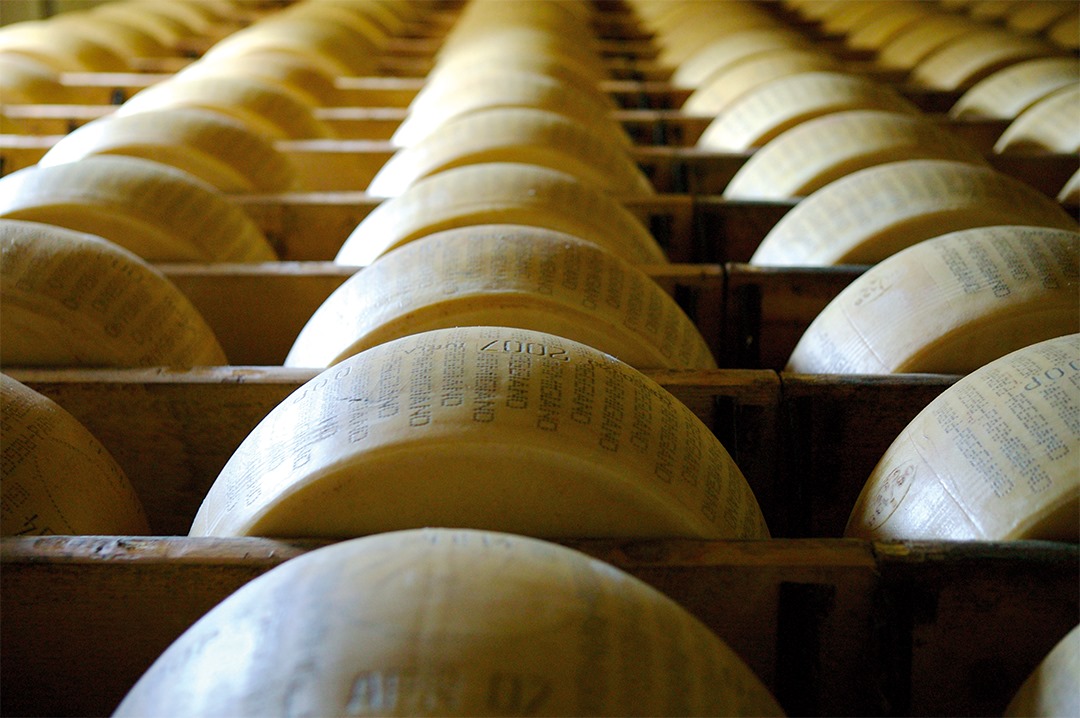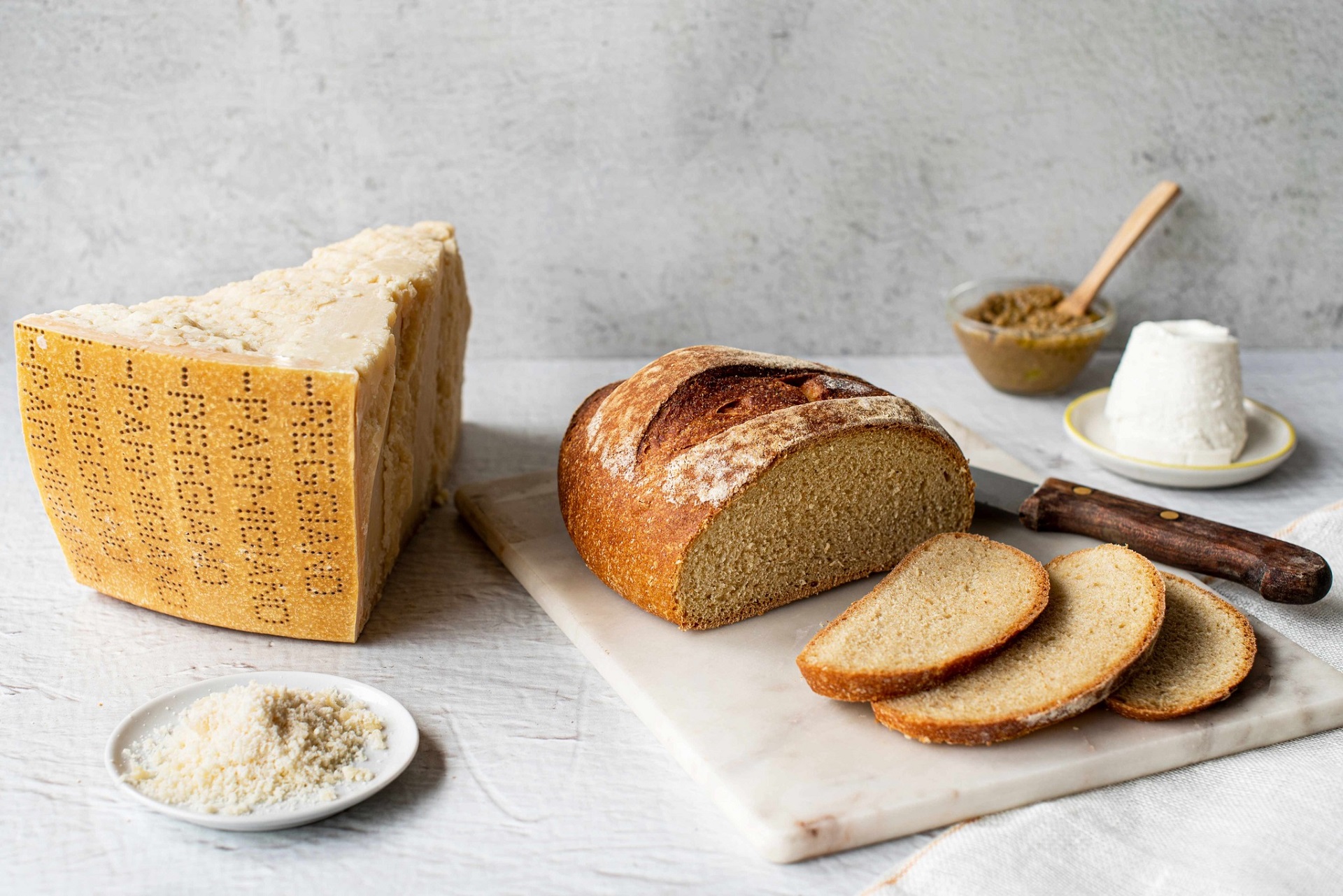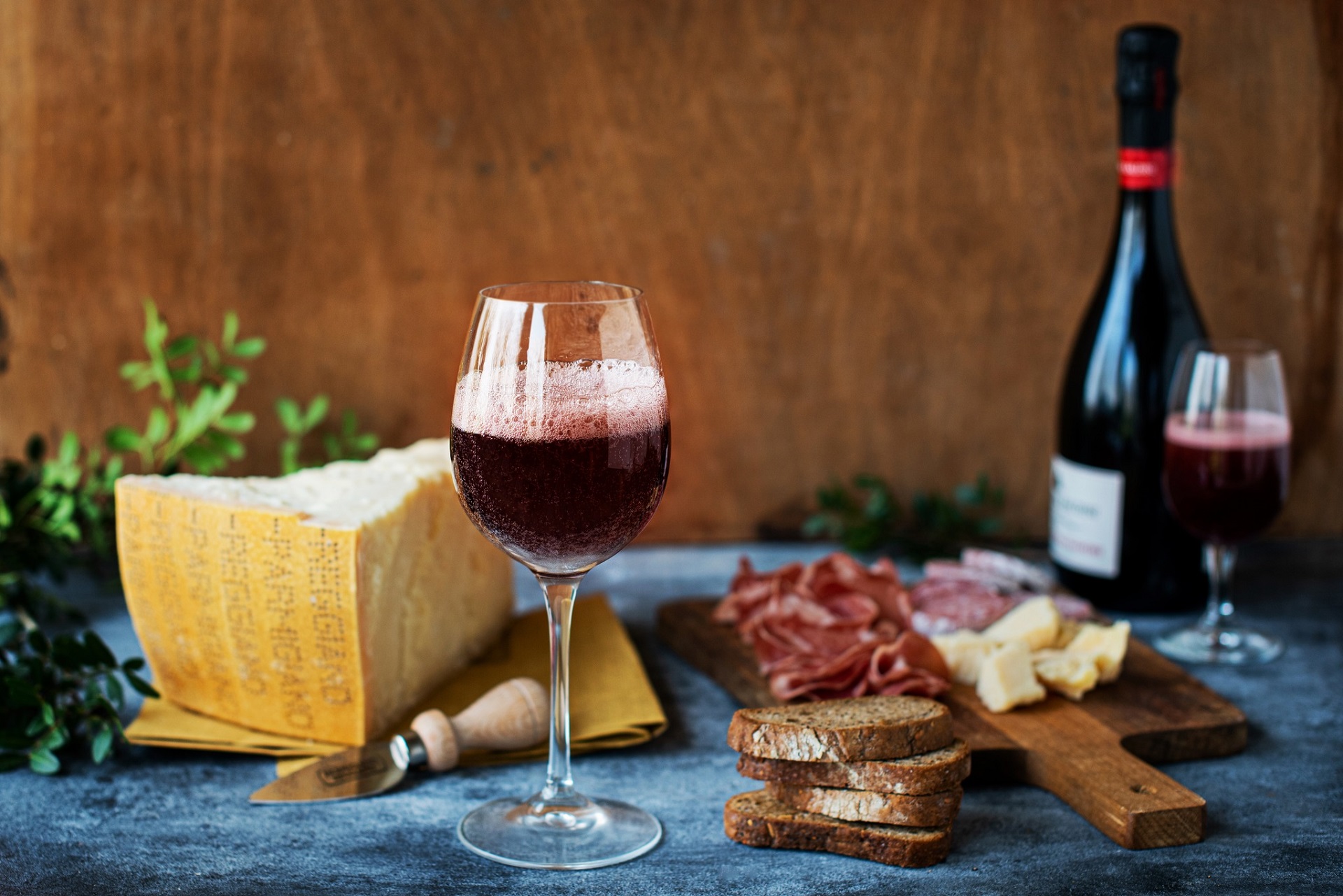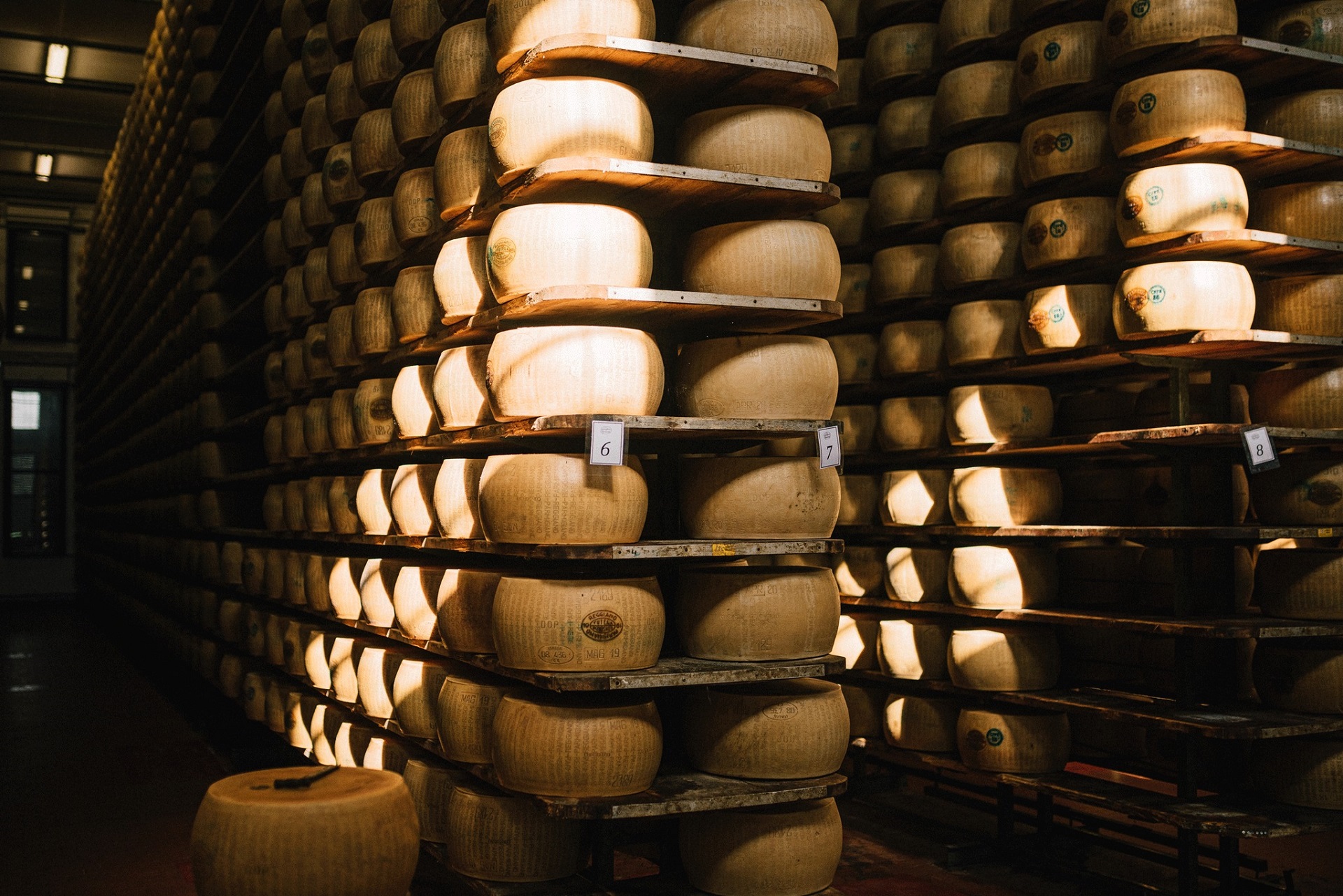Among the most beloved PDOs nationally and internationally, Parmigiano Reggiano, an undisputed king of Italian cheeses known worldwide, fully embodies the authentic value of biodiversity.
Nine centuries of history encapsulated in a wheel, with scents and flavors of ancient origin, symbolizing the excellence of a product proud of Italy’s global presence. Each sliver carries almost 1000 years of taste, tradition, craftsmanship, and artisanal skill, values upheld today in the cheese made according to the original recipe.
A product that inspired renowned authors like Giovanni Boccaccio, who mentioned it in the 1200s in the Decameron, describing the Country of Bengodi: ‘And there was a mountain all of grated Parmigiano cheese, on which people stood, doing nothing else but making macaroni and ravioli and cooking them in broth of capons, and then throwing them down, and the more one caught, the more one had.’
Produced in the provinces of Modena, Reggio Emilia, and Parma, part of the provinces of Bologna and Mantova, with partially skimmed cow’s milk by surface skimming, the Parmigiano king can be enjoyed in various variants, each with its own characteristics and personality due to the aging process.”
Aging
The minimum aging period is indeed 12 months, equivalent to the longest minimum aging period of all PDO cheeses. However, it is around 24 months that Parmigiano Reggiano reaches the maturation suitable to express its typical characteristics. It can age even further, up to 36 or 48 months or even more, revealing unexplored aromas and fragrances.
During the process, thanks to the action of enzymes released by lactic bacteria, proteins are broken down into smaller pieces, peptides, and free amino acids, the basic building blocks of the protein chain. This protein breakdown action (proteolysis) determines the structural and sensory properties of Parmigiano Reggiano and its high digestibility.
The different aging stages provide different aromatic sensations, making it particularly versatile in the kitchen, adapting to many preparations and pairings.
Parmigiano Reggiano aged 12-18 months
The 12-18 months-aged Parmigiano Reggiano has a harmonious and delicate flavor with hints of milk, yogurt, and fresh fruit. It is particularly suitable as an aperitif paired with sparkling white wines or to enhance salads and cold dishes.
Parmigiano Reggiano aged 22-24 months
With an aging of 22-24 months, the product is soluble, crumbly, and granulated with a balanced blend of sweet and savory flavors, featuring notes of fresh fruit, dried fruit, and meat broth. Perfect with medium-bodied wines and to add flavor to all traditional Italian dishes.
Parmigiano Reggiano aged 30-36 months
Remarkably crumbly and granulated, the form has a strong flavor with hints of spices, dried fruit, and meat broth. It proves to be an ideal ingredient for stuffed and baked pasta or enjoyed after meals paired with fruit and honey.
Parmigiano Reggiano aged over 40 months
Parmigiano Reggiano aged over 40 months has withstood the test of time, offering pleasant hints of spices. It represents an exclusive gift and a delightful companion to be enjoyed with structured and contemplative wines.
The Breeds
White Modenese Cow
A Slow Food Presidium, the White Modenese Cow is an animal with triple aptitude: in the past, besides being destined for milk and meat production, it also constituted a valuable aid in fieldwork. It probably derives from cattle with a wheat-colored coat, similar to the red Reggiana, crossed with gray podolico-type cattle. Its milk is particularly suitable for the transformation into Parmigiano Reggiano and cheese production in general, thanks to the optimal ratio of fat to protein and the high presence of the k fraction of caseins, which promotes quick and resistant milk coagulation.
Red Reggiana Cow
Until the post-war period, traditional stables on peasant farms had cows with a reddish coat, used not only for plowing and pulling carts but also for providing meat and the milk necessary for Parmigiano Reggiano production.
The origins, dating back to the year 1000, are probably in Pannonia, modern-day Hungary, from where they came following the Lombard invasions. Its milk is particularly rich in proteins—casein in particular—calcium, and phosphorus, and it possesses optimal cheesemaking qualities: cream surfaces appropriately, milk coagulates rapidly, the curd is consistent and elastic, the whey is clear; consequently, the cheese yield is high. The Reggiana Breed Association, which brings together producers of the red breed, defines 24 months as the minimum aging time for the cheese.
Brown Cow
The introduction of the brown breed in the Parmesan region dates back to the mid-18th century, although some documents from the 16th and 17th centuries mention cattle with a brown coat, probably of Swiss origin and coming from Lombardy. These cows were successful because of their hardiness and docility, suitable for fieldwork. Over the years, the brown breed has become prominent in milk production, with rheological characteristics that result in milk highly suitable for cheesemaking due to its high casein profile and elevated fat content.
Italian Holstein-Friesian
It represents the most widespread breed among Parmigiano Reggiano breeders: imported from the Netherlands, it is known as Holstein-Friesian because the original stock is found in the Dutch region of Friesland. The first specimens arrived in Italy at the end of the 19th century for breeding purposes and research at the Zanelli Institute in Reggio Emilia, comparing the productive characteristics of various breeds. In the 20th century, specimens were then imported from Italian farms, and the breed, now acclimated, asserted itself for its high productivity, becoming the most common dairy breed in Italy and the Parmigiano Reggiano area.
Certifications
Mountain Product
Since 2013, with EU Regulation 1151/12, the designation “Mountain Product” has been introduced to classify food products originating in the mountain areas of the European Union. Parmigiano Reggiano is the most important PDO (Protected Designation of Origin) product obtained in the mountains, with over 110 dairies located in the mountains and over 1,200 farmers who, every day, contribute to strengthening the economy and preserving the uniqueness of the mountainous territory of Parma, Reggio Emilia, Modena, and Bologna.
To provide greater sustainability to mountain development and offer consumers additional guarantees related not only to the origin but also to the quality of the cheese, the Parmigiano Reggiano Consortium has defined the “Mountain Product – Consortium Quality Project.”
The requirements to obtain certification are: 100% milk from cows in mountain stables; more than 60% of the cows’ feed is grown in the mountain area; dairy and aging for a minimum of 12 months in the mountain area; qualitative selection at 24 months with “hammer” evaluation by Consortium experts; sensory evaluation (tasting group) and analysis of chemical composition.
Variants
Kosher
Available in a kosher version, it is intended for observant Jewish consumers. It requires that all steps performed in production, from milking to portioning, be certified according to kashrut, the Jewish dietary laws based on the interpretation of the Torah. The processing stages are supervised by a rabbi and controlled by Ok Kosher Certification, one of the most accredited and recognized entities in the world of kosher certifications.
Halal
Another tasty variant is Halal Parmigiano Reggiano, which reconciles the PDO production specifications with the guidelines of Islamic law regarding “permissible food,” based on the Quran. Certification makes the product suitable for the Islamic market, including careful steps taken in production, traceable and controlled.
Organic
A special mention, finally, for the product from organic agriculture: all steps taken in production must ensure the full traceability of the product and certification according to official legal provisions regarding organic agriculture.





